This is my plan for the project going forward. I am planning on using pine wood or particle board with a veneer. The goal is to keep a fairly natural look for the project. The speaker shown below is trapezoidal in shape and features three separate chambers: a stereo left sealed , center ported sub woofer, and a stereo right sealed enclosure. This should give me a really nice sound out of this speaker. The biggest challenge will be designing and building the ported section.
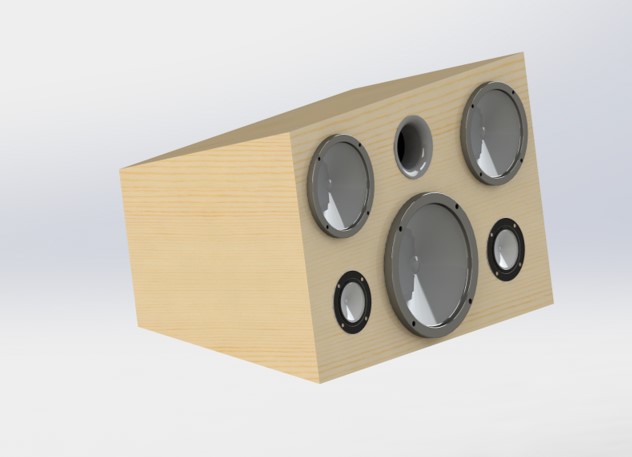
The aesthetic aspirations of this project are woodworking, minimalistic and hipster. I’ve always enjoyed the look of boombox style speakers. The audio quality such as stereo separation is secondary for me, and the style comes first. In this speaker I’m going to be using the following components:
- 2 amplifiers powering 5 speakers
- Bluetooth connection with volume control and auxiliary input
- 10 pieces of wood
- 3 separate chambers:
- Stereo left (sealed)
- Stereo right (sealed)
- Subwoofer (ported)
Here is a exploded model of the speaker system that I’m trying to build this semester:
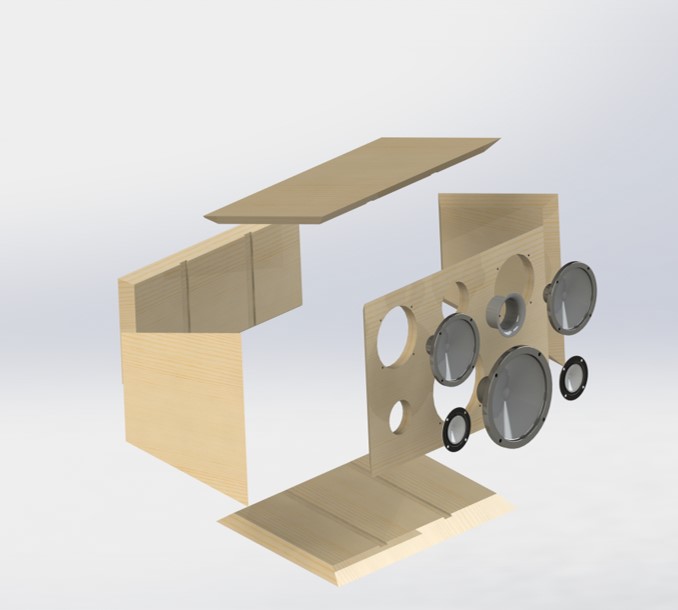
Including the interior maze and separating sections, the box will have roughly 16 different pieces of wood, requiring quite a lot of time in the wood shop. I have also decided to bevel the edges of the wood so that I can have things fit together really nicely. This will eliminate end grain visibility and will allow for a much cleaner look overall.
Below are some examples of speaker enclosures that inspired me for this project:
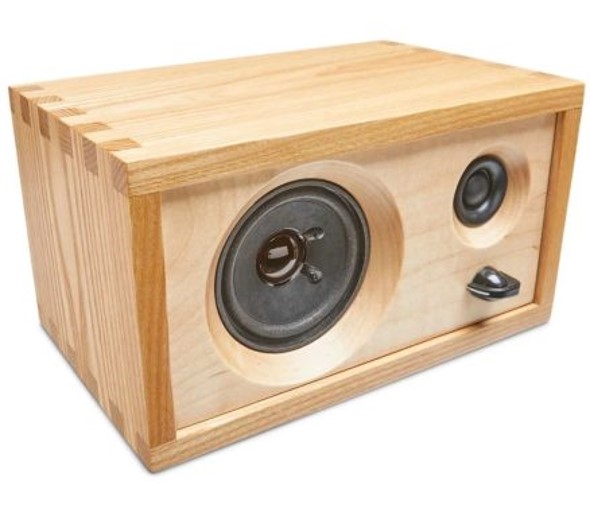
Image courtesy [1]
- This is a good example of some pretty simple finger joints in this box. They are a pretty nice way to make your box look good without complicated bevels like I’m planning, but they get really difficult when considering the odd angles that I have planned for my enclosure.
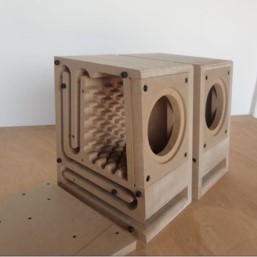
Image courtesy [2]
- This is a really nice example of what goes into creating a ported enclosure. It is really valuable to have well thought out plans for these types of designs, because they get very complicated very quickly.
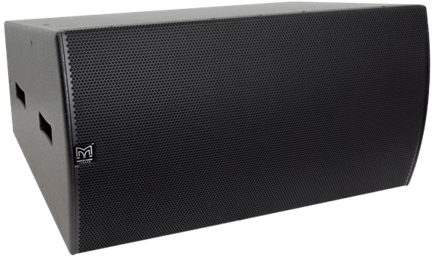
Image courtesy [3]
- This is just an example of a concert speaker. I took some inspiration from the trapezoidal shape.
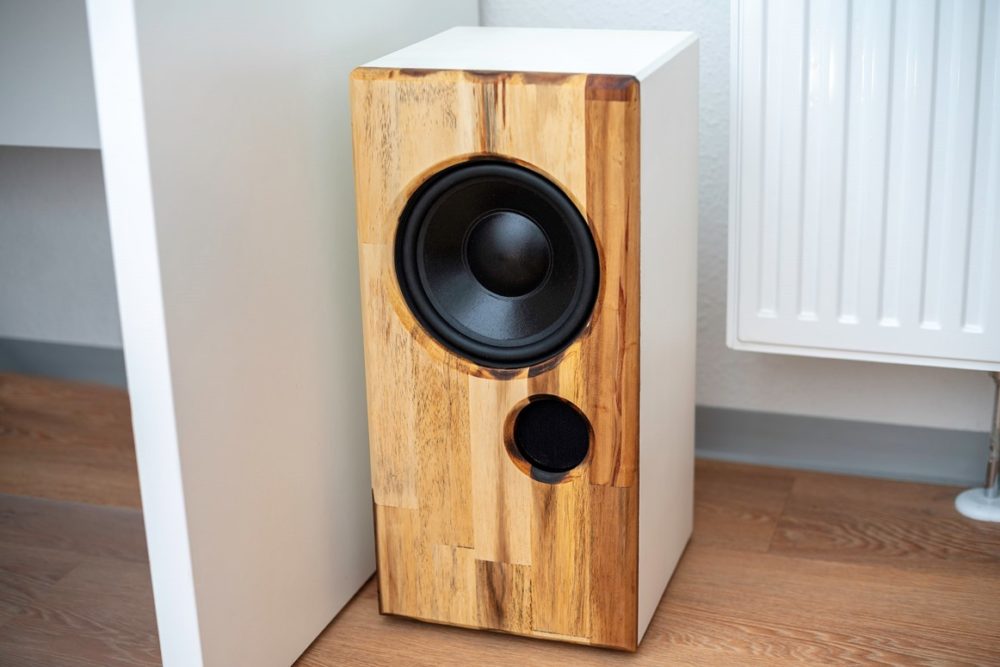
Image courtesy [4]
- This was one of my main inspirations, I really like the look of natural wood mixed with the simple design. This is a ported enclosure like what I am planning for.
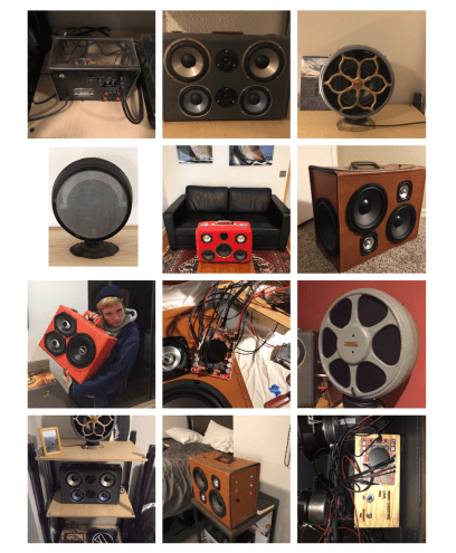
- Here are some examples of past speaker projects that I have worked on. I’ve been looking towards using natural wood for a long time now. I’ve always worked at modifying vintage things like old speaker enclosures and vintage suitcases.
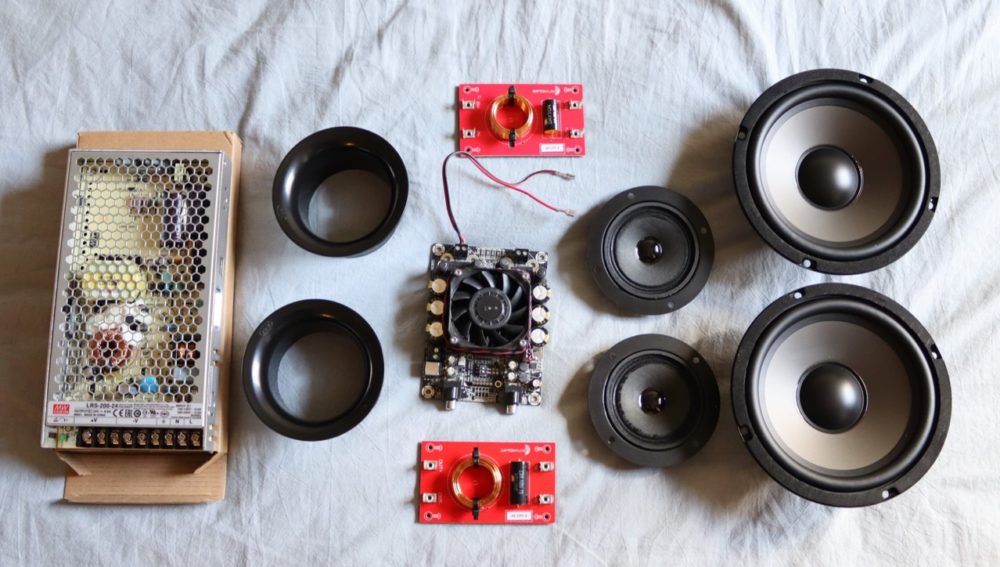
- These are the components that I have acquired so far. There are still a few things left to purchase like another amplifier that uses bluetooth connectivity. The next thing that I need is a simple power connection to allow me to charge the speaker from the wall plug.

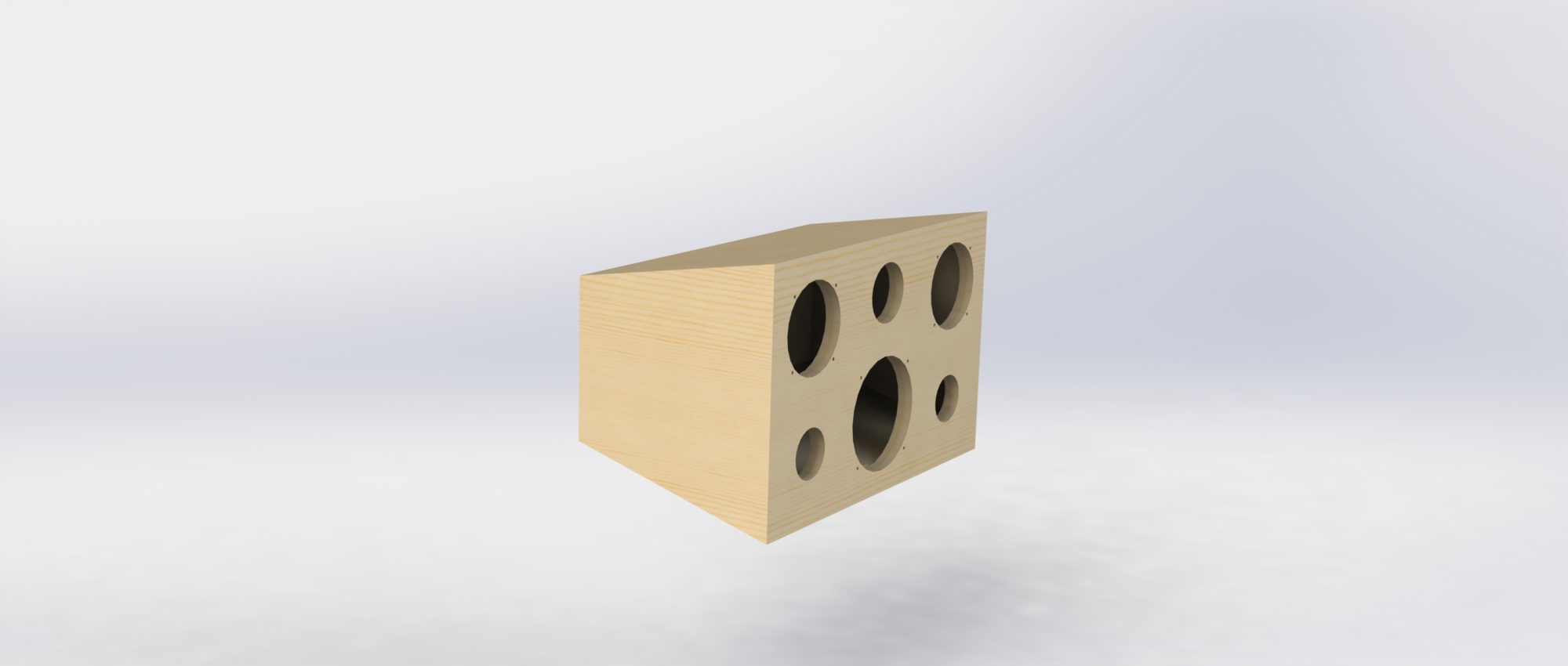
7 Comments. Leave new
Max, Thank you for the story of where you mind has been throughout this project. Think about what frequency you are trying to boost and make sure that this is actually and audible frequency. Also, make sure you talk with the machine shop to see if and how they can do what they want to do. It might just depend on the machine shop and their tools, so be ready to do it a different way if you need to. Other tan that, I would think about doing the wood joinery still, you could increase the scale so that it is not so intricate.
Nice work, Max! Really like the minimalist aesthetic and the simplicity of a nice finished wooden project! Excited to see how it turns out!
Your presentation was excellent! You are extremely knowledgeable on the topic of speakers and the sound-waves that different types of speakers produce and how the sound quality will be affected by you decisions and overall design. What was very interesting for myself personally was the capturing of the “backwards sound wave” produced by the subs. You mentioned that common “sealed” speakers are easy, but loose some potential sound boosting since they do not capture that backward sound wave. The design that you are trying to accomplish to capture this looks complex, but also very interesting! Again, you expertise in the area of speakers was very well portrayed, and you were able to provide more than enough information for the group on wavelengths and frequencies and how they all play a part in the design process and speaker selection!
Hi Max,
This looks really cool. I like the hipster aesthetic you want to apply. It’d be cool if we could see inside the enclosure. It’s clear that you are confident in what you are doing. I wish you luck with your project.
I think your biggest issue will be trying to test and determine the frequency. Even if you can’t test, or are unable to change your design after testing, will the speaker still work as intended? I’m also looking through different wood materials for my project, I’ll let you know if I find anything useful for you
Max, you have such a well thought out project and I love the aesthetic you’re going for. I think adding the inside “maze” for the sound will be such a cool addition to the minimal design on the outside. Good luck, I can’t wait to see how it turns out!!
Statement of Meaning:
Really love the wood aesthetic paired with the minimalist aesthetic, i think the two go extremely well together.